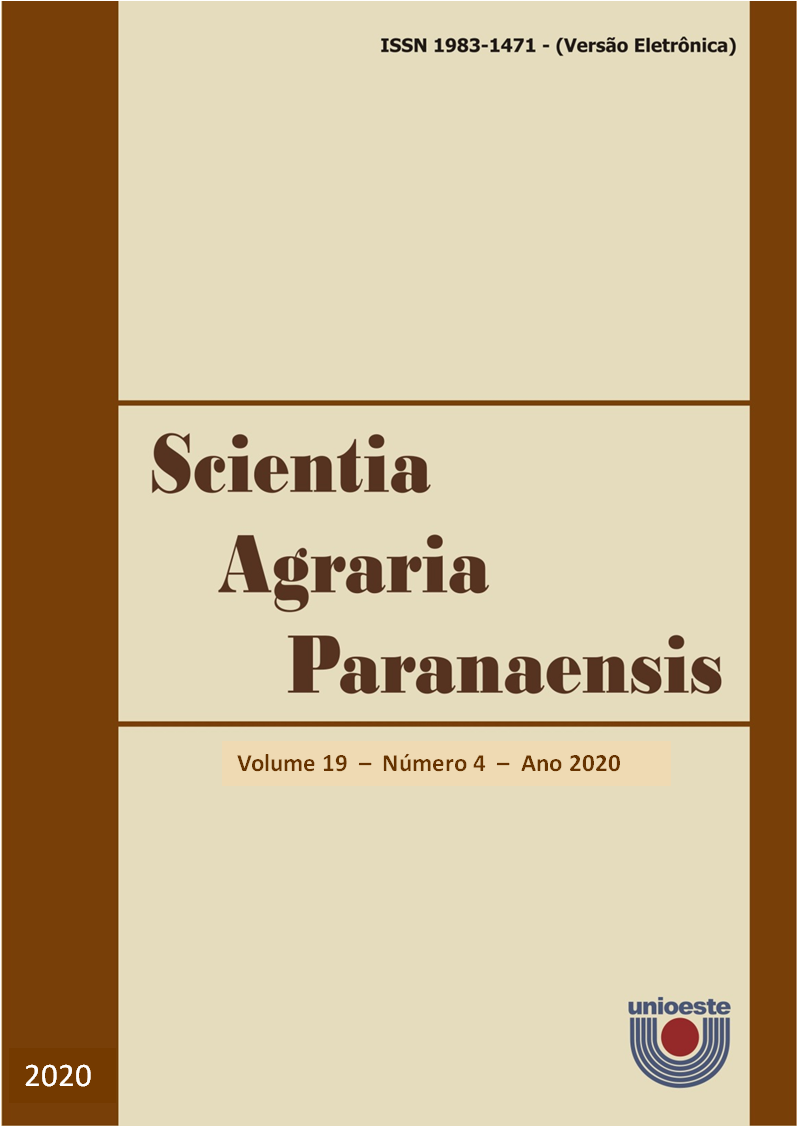Hydro-conditioning and seed partitioning for Inga laurina (SW.) Willd Propagation
DOI:
https://doi.org/10.18188/sap.v19i4.24844Resumo
The Inga laurina (Sw.) Willd species comes from tropical and subtropical regions, in several phytogeographic areas of distribution, including Brazil. It belongs to the leguminous family, present in riparian forests and used in urban afforestation, it provides shading and a pleasant microclimate, ornamental value, in addition to the fruit being consumed by man and birds. Species of this genus have compounds that are used in popular medicine. The propagation method is still by seeds, making it difficult to obtain the seedling, as they present recalcitrance, impairing its storage viability. The objective of this work was to verify the possibility of I. laurina seeds partitioning for the species propagation, and the storage viability, if previously subjected to hydro-conditioning. A completely randomized design was adopted, in a 2 x 4 factorial (Lot x storage time), with four replications of 50 seeds per experimental unit. The treatments were formed by the lots of whole and partitioned seeds, plus the hydro-conditioning application in the stored period. After the treatment’s application, sowing was done in tubes, being kept in a 120-day evaluation period. After this period, emergence, emergence speed index, average emergence time, air length and roots (cm), the aerial part and roots dry biomass (g), number of roots, leaves and stems (g) were evaluated. Seed partitioning was not proved to be advantageous. The seed partitioning technique was not proved to be advantageous. The hydro-conditioning adoption during storage allowed the seeds to remain viable and with the desired vigor.
Downloads
Publicado
Como Citar
Edição
Seção
Licença
Aviso de Direito Autoral Creative Commons
Política para Periódicos de Acesso Livre
Autores que publicam nesta revista concordam com os seguintes termos:
1. Autores mantém os direitos autorais e concedem à revista o direito de primeira publicação, com o trabalho simultaneamente licenciado sob a Licença Creative Commons Attribution que permite o compartilhamento do trabalho com reconhecimento da autoria e publicação inicial nesta revista.2. Autores têm autorização para assumir contratos adicionais separadamente, para distribuição não-exclusiva da versão do trabalho publicada nesta revista (ex.: publicar em repositório institucional ou como capítulo de livro), com reconhecimento de autoria e publicação inicial nesta revista.
3. Autores têm permissão e são estimulados a publicar e distribuir seu trabalho online (ex.: em repositórios institucionais ou na sua página pessoal) a qualquer ponto antes ou durante o processo editorial, já que isso pode gerar alterações produtivas, bem como aumentar o impacto e a citação do trabalho publicado (Veja O Efeito do Acesso Livre).
Licença Creative Commons
Esta obra está licenciada com uma Licença Creative Commons Atribuição-NãoComercial-CompartilhaIgual 4.0 Internacional, o que permite compartilhar, copiar, distribuir, exibir, reproduzir, a totalidade ou partes desde que não tenha objetivo comercial e sejam citados os autores e a fonte.


